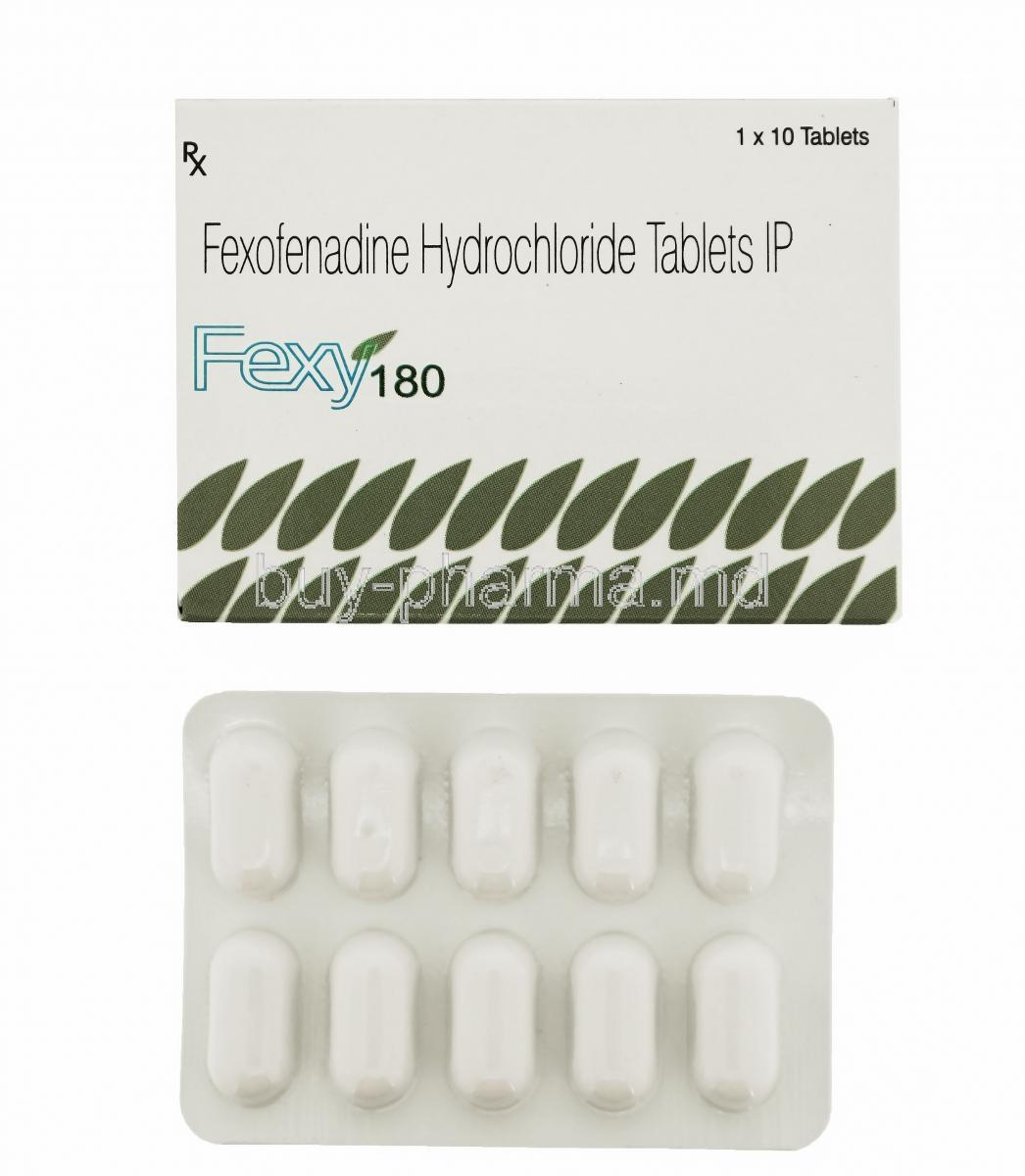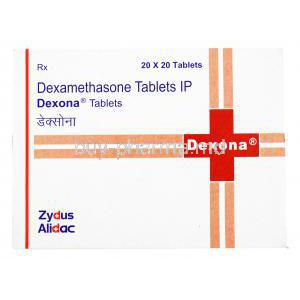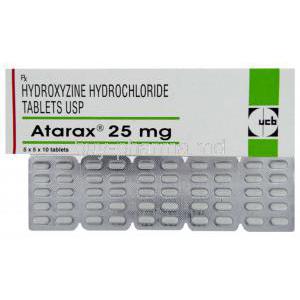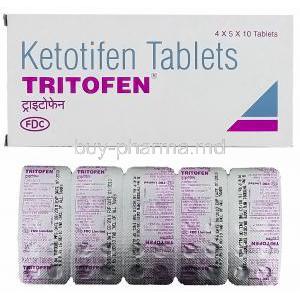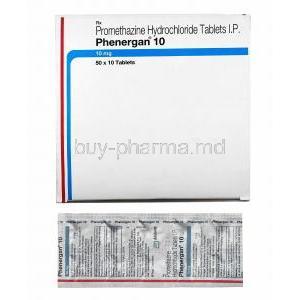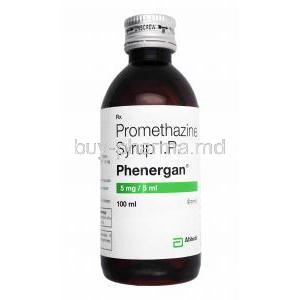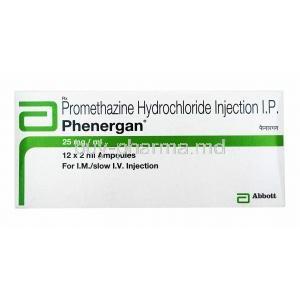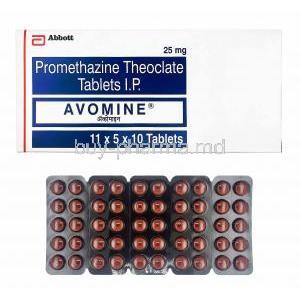Fexy, Fexofenadine
- Introduction
- Composition
- How It Works
- Uses
- Off-Label Use
- Dosage and Administration
- Side Effects
- Common Side Effects
- Important Precautions
- Interaction
- Warning
- Contraindication
- Careful Administration
- Administration to Elderly
- Administration to Pregnant Women and Nursing Mothers
- Administration to Children
- Over Dosage
- Storage
- Handling Precautions
Introduction
The introduction of Fexofenadine has significantly transformed the field of pharmacology in combating reactions ushering in a new era in treating and alleviating allergy symptoms. This medicine, recognized for its effectiveness and mild sedative properties has become a part of the treatment plan for many people. It stems from a line of antihistamines that have been improved over years of study and innovation to cater to the needs of those dealing with allergies, with accuracy and dependability.
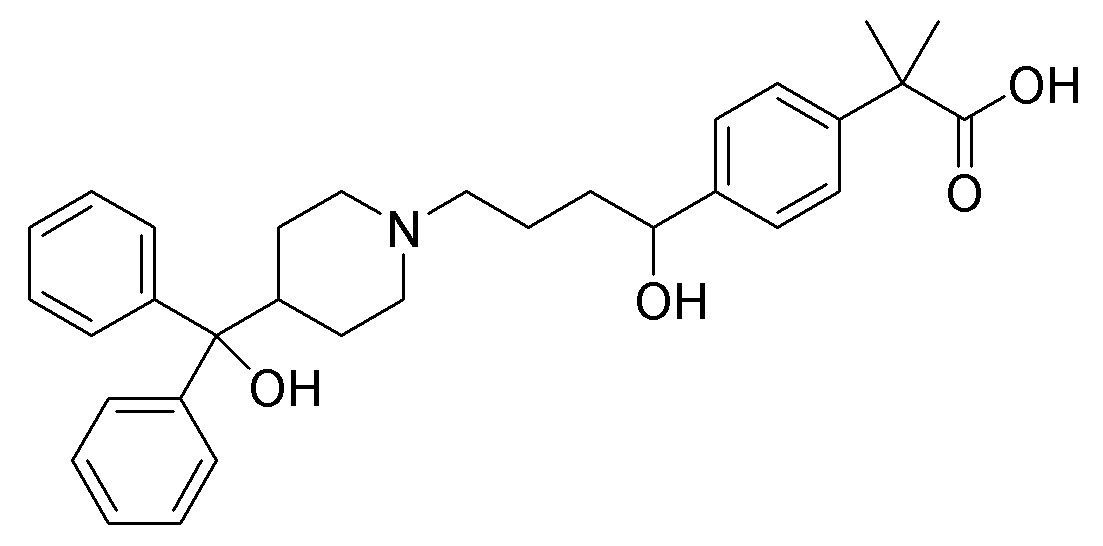
Fexofenadine
Overview of Fexofenadine
Fexofenadine, an antihistamine is praised for its effectiveness in easing the symptoms of allergic reactions without causing drowsiness, a common side effect of several other antihistamines. Its unique way of working focuses on the histamine H1 receptors with precision providing relief from both year seasonal allergies, like hay fever and hives.
Brief History of Fexofenadine Development
- Fexofenadine was created in the 20th century to improve upon the sedative side effects commonly seen in older antihistamines.
- It was designed as an upgrade to terfenadine offering a profile and gaining approval, from regulatory bodies in the late 1990s.
- This development signifies an attempt to enhance available treatment choices aiming for increased safety and effectiveness.
Importance of Fexofenadine in Allergy Management
In the field of managing allergies, Fexofenadine is recognized as an example of progress in treatment. Its ability to effectively alleviate allergy symptoms without causing drowsiness, an issue with antihistamines marks a notable advancement.
This feature makes it essential, for people looking to carry on with their activities without being hindered by the discomfort of allergies.
Composition
Active Ingredients in Fexofenadine
The key component in this medication that makes it work effectively is Fexofenadine hydrochloride. It is carefully adjusted to prevent receptors, from triggering, which stops the chain of events causing allergy symptoms.
Inactive Ingredients and Their Functions
In addition to the component Fexofenadine tablets contain various inactive components.
These ingredients such as microcrystalline cellulose, pregelatinized starch and magnesium stearate play roles, in the composition.
They help maintain the ingredients stability and aid in the tablets breakdown and absorption process.
Formulations Available: Tablet, Suspension, and Others
The flexibility of fexofenadine is evident in the forms it comes in tailored to meet the varied choices and requirements of patients. With options such, as tablet suspension and more it caters to a wide range of people including those who struggle with swallowing pills.
How It Works
Mechanism of Action: Blocking Histamine H1 Receptors
Fexofenadine works by blocking the histamine H1 receptors, which helps reduce allergic reactions caused by histamine. This action helps relieve symptoms like sneezing, itching, and watery eyes.
Effects on the Immune System
Fexofenadine mainly targets receptors but also plays a role in regulating the immune system. It helps to calm down allergic reactions without harming the body's natural defense mechanisms showing a good balance, between effectiveness and safety.
Comparison with Other Antihistamines
When compared to antihistamines Fexofenadine stands out for being safer especially because it doesn't cause drowsiness. This is important for people who need allergy relief without feeling sleepy and unable to carry out their tasks. Additionally, it works well. Starts working quickly making it a popular option, among healthcare providers and patients.
Uses
Fexofenadines's(1) effectiveness in the field of medicine is clearly seen in how it helps improve conditions. It is widely used to treat allergies(2) and chronic hives(2) playing a key role in managing allergies.
This antihistamine(1) stands out by easing symptoms caused by indoor and outdoor allergens. Additionally, Fexofenadine is beneficial in reducing eye allergy symptoms offering an approach, to treating allergies.
1. WebMD - Fexofenadine
2. NHS - Fexofenadine
3. NCBI - Fexofenadine in higher doses in chronic spontaneous urticaria
4. National Library of Medicine - Fexofenadine
Primary Uses: Seasonal Allergic Rhinitis and Chronic Urticaria
Fexofenadine plays a role in managing allergies(1) due to its effectiveness in treating seasonal allergic rhinitis(2) and chronic urticaria. These conditions, which occur when the immune system reacts excessively to allergens can cause a range of symptoms that significantly impact the quality of life for those affected.
- Seasonal allergic rhinitis(3), often triggered by pollen from plants results in symptoms, like sneezing, itching, nasal congestion, and a runny nose.
- Chronic urticaria is characterized by the presence of hives and angioedema for six weeks or more without a cause. Fexofenadine's ability to inhibit release helps alleviate discomfort associated with this condition.
1. National Library of Medicine - Fexofenadine
3. OpenRES- Effect of fexofenadine hydrochloride on allergic rhinitis aggravated by air pollutants
Efficacy in Treating Indoor and Outdoor Allergies
Fexofenadine is known for its ability to effectively combat both outdoor allergens
- . By targeting the histamine H1 receptors it offers a ranging approach to managing allergies. Indoor allergens like dust mites pet dander and mold pose a year-round challenge for people but Fexofenadine helps alleviate symptoms caused by exposure to these persistent triggers.
- On the other hand, outdoor allergens such as pollen, grass, and tree allergens are seasonal in nature. Fexofenadine's effectiveness in reducing reactions to these elements enables individuals to enjoy outdoor activities, with fewer symptoms.
Benefits in Eye Allergy Symptoms
Eye allergies can really disrupt your life with symptoms like itching, redness, and watery eyes. Fexofenadine antihistamine properties don't just help with issues but also work wonders for easing those pesky eye symptoms.
By blocking the histamine H1 receptors Fexofenadine tackles the root cause of reactions that cause eye discomfort. This targeted relief can make a difference, in how you feel and improve your quality of life if you're dealing with allergies.
Off-Label Use
The study of Fexofenadine's usefulness goes beyond its purposes venturing into the realm of alternative uses. This effort not only highlights the flexibility of the drug but also sheds light on its ability to improve various conditions other than its main uses.
These include using it for skin conditions exploring its potential in managing asthma and investigating its effectiveness in treating urticaria. These explorations into, off-label use demonstrate an effort to enhance patient care by repurposing existing medications.
Application in Dermatological Conditions
Fexofenadine, known for its ability to combat allergies is a tool for dermatologists in treating skin conditions caused by allergic reactions.
- Its effectiveness in relieving itching associated with skin problems demonstrates its potential beyond just treating allergies.
- Skin conditions like eczema and contact dermatitis, where inflammation and itching are factors could benefit from Fexofenadine's ability to reduce allergic responses.
- This unconventional use of the medication not only offers a different treatment option but also showcases its versatility, in addressing allergy-related issues throughout the body.
Potential Use in Asthma Management
The study of how Fexofenadine works also looks at its effectiveness in treating respiratory issues, such as asthma, a long-term inflammatory condition affecting the airways.
Although not the treatment for asthma Fexofenadine's ability to reduce allergic responses suggests it could play a supporting role in managing asthma especially when both allergic rhinitis and asthma are present.
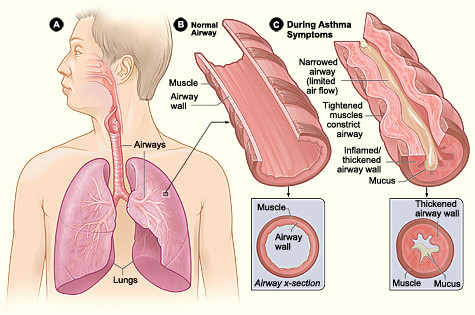
Asthma
The reason behind this approach lies in how these conditions are connected physiologically; effectively managing allergic rhinitis can have a positive impact on asthma symptoms.
This unconventional use encourages research into the overall benefits of antihistamines for treating asthma potentially improving the quality of life for those with these conditions by taking a more comprehensive approach, to managing allergic diseases.
Exploring Its Role in Idiopathic Urticaria
Idiopathic urticaria, a condition characterized by recurring hives without a clear cause presents a significant treatment challenge. The interest in exploring Fexofenadine for this purpose originates from its antihistamine properties that target the root of the symptoms.
- The drugs ability to offer relief for symptoms of urticaria highlights its flexibility and the broader impact of how it works in treating long term allergic conditions.
- While traditionally prescribed for urticaria with known triggers using Fexofenadine off-label in cases where the cause is unknown brings hope, to those dealing with this unpredictable and distressing issue.
- This unconventional use not only expands treatment options but also emphasizes the importance of personalized medical approaches when dealing with complex allergic disorders.
Dosage and Administration
Fexofenadine, a ray of hope for people with allergies comes with instructions to guarantee its effectiveness and safety. Grasping the details of how much to take and how to use it is crucial, for getting the results from treatment while reducing any potential side effects.
Recommended Dosages for Adults and Children
The recommended amount of Fexofenadine to make changes based on age. The specific illness being treated stresses the importance of following the prescribed directions.
- Typically adults and kids over 12 years old are advised to take a dose, between 120 mg and 180 mg each day depending on how severe their allergy condition is.
- For children aged 6 to 11 years, the dosage is usually adjusted to 30 mg taken two times a day highlighting the drug's flexibility in treatment.
- This individualized approach guarantees that each patient gets the therapeutic dose to ease symptoms while prioritizing safety.
Dosage Adjustments for Specific Populations
Certain groups of people might need changes in the amount of medication they receive because of variations in how their bodies process drugs. Because they have other health issues.
For example those, with kidney problems or older individuals might need to begin with a dose to reduce the chances of harmful side effects caused by an excessive buildup of the drug in their system.
These adjustments are carefully calculated based on each patient's medical history emphasizing the significance of personalized treatment strategies.
Administration Tips for Optimal Efficacy
To maximize the effectiveness of Fexofenadine it's essential to follow the guidelines. It's best to take Fexofenadine with water when your stomach's empty either an hour before eating or two hours after a meal as this aids in better absorption.
Additionally, it advised to avoid consuming fruit juices alongside Fexofenadine to prevent any interference, with the drug absorption and ensure its performance.
Side Effects
Although Fexofenadine is well known for being effective and safe it's important to be aware of its side effects, in order to make informed healthcare choices.
Common Side Effects: Dizziness, Headache, and Nausea
Frequently mentioned reactions, to Fexofenadine, consist of feelings of lightheadedness, headaches, and queasiness. These effects are typically mild and temporary often fading away on their own without requiring attention.

Headaches
Rare but Serious Side Effects: Cardiac Arrhythmia and Hypersensitivity Reactions
On occasion, Fexofenadine may cause severe side effects, like irregular heartbeats and allergic reactions. It is crucial to seek medical help when experiencing these symptoms underscoring the importance of closely monitoring for any negative outcomes.
Managing Side Effects and When to Seek Medical Attention
When dealing with side effects it's important to address the symptoms and consider adjusting the amount of Fexofenadine if needed. If patients notice any lasting side effects, especially ones that suggest an allergic reaction or heart issues they should consult a healthcare provider promptly.
Common Side Effects
Digestive System Side Effects: Nausea, Diarrhea, and Vomiting
Fexofenadine can sometimes cause issues with the system leading to symptoms, like nausea, diarrhea, and vomiting. Although these side effects can be unpleasant they are typically temporary. Can be managed.
Nervous System Side Effects: Dizziness and Sleepiness
Patients may feel dizzy or drowsy due to the effects of the medication indicating its overall impact on the body. It is recommended for individuals, with these sensations to be careful while driving or using machinery.
Incidence Rates and Preventive Measures
The occurrence of these side effects is usually rare. Taking precautions such, as adjusting the dosage and monitoring closely can help. It's crucial to educate patients about side effects and how to manage them to ensure their safety and the effectiveness of their treatment.
Important Precautions
To make sure that Fexofenadine is used safely and effectively it's crucial to have a grasp of important precautions. These steps are put in place to reduce risks and optimize the treatment results, for those who depend on this antihistamine for managing allergies.
Before Taking Fexofenadine: Allergies and Interactions
Before starting Fexofenadine treatment it's important to check for any allergies to the medication or its ingredients. Patients should also share what medications they are currently taking to see if there could be any interactions, between drugs.
Precautions Related to Impaired Kidney Function
Fexofenadine is mainly eliminated from the body through the kidneys so people, with kidney issues need to be careful. If someone has kidney problems they might need to adjust their dosage or have frequent checkups to avoid any buildup of the medication and potential side effects.
Effects on Mental Alertness and Performing Tasks
Although Fexofenadine is known to have more sedative effects than older antihistamines it's important for patients to test their own reaction, to the medication before participating in tasks that demand mental focus or operating machinery.
Interaction
It's important to know how Fexofenadine interacts with substances to avoid any negative reactions and make sure the medication works effectively.
Drug-Drug Interactions: Antacids, Erythromycin, and Ketoconazole
When you take Fexofenadine with antacids that have aluminum or magnesium it may not work well because the antacids can affect how your body absorbs it. Also, medications like Erythromycin and Ketoconazole can make the levels of Fexofenadine, in your blood go up which could lead to side effects.
Drug-Food Interactions: Grapefruit Juice and High-Fat Meals
Consuming grapefruit juice and meals high in fat may change how Fexofenadine is absorbed and metabolized potentially affecting its efficacy. It is recommended for patients to take Fexofenadine with water and, on a stomach to achieve optimal results.
Managing and Preventing Interactions
To ensure that interactions are managed and prevented effectively it is important to examine the medications the patient is taking their eating habits and how well they follow the instructions for taking their medication. Healthcare professionals are essential, in educating patients about ways to steer clear of interactions.
Warning
It's crucial to pay attention to the cautions related to using Fexofenadine to protect the health of patients in groups that are more susceptible, to negative reactions.
Contraindications: Severe Hypersensitivity to Ingredients
Individuals who have an allergic reaction, to Fexofenadine or any of its inactive components should avoid taking the medication to prevent severe allergic responses.
Warnings for Patients with Cardiovascular Diseases
Fexofenadine, while uncommon can impact the heart rhythm. Individuals with a background should exercise care when using Fexofenadine and seek guidance from a healthcare professional, for close monitoring.
Interaction Warnings with Alcohol and CNS Depressants
Using Fexofenadine at the same time as alcohol or drugs that affect the central nervous system (CNS) can increase drowsiness despite Fexofenadine being generally not sedating. It is recommended that patients avoid taking these substances.
Contraindication
It is crucial to recognize and comprehend the contraindications associated with Fexofenadine to safeguard well-being and optimize the medication's efficacy. These contraindications vary from absolute indicating situations where the medication must not be administered all to relative suggesting that careful evaluation should be conducted considering each patient's unique conditions.
Absolute Contraindications: Past History of Allergic Reactions to Fexofenadine
People who have a known record of being allergic to Fexofenadine or any of its ingredients should avoid taking this medication. Allergic responses can vary from mild, to severe. May manifest as hives, breathing difficulties, or even anaphylaxis which can pose serious health hazards.
Relative Contraindications: Pregnancy and Lactation Considerations
Fexofenadine is a medication that needs to be used during pregnancy and while breastfeeding. Since there aren't studies on pregnant women it's important to weigh the benefits, against the risks before using Fexofenadine.
Similarly, its recommended to be careful when giving this medication to breastfeeding mothers because it's uncertain if Fexofenadine can pass into breast milk.
Precautionary Measures for Patients with Chronic Health Conditions
Patients who have long-term health issues like kidney or liver problems might need changes, in their medication doses and frequent checkups.
It's also important to be careful when dealing with heart conditions as there could be a risk of heartbeats when using antihistamines.
Careful Administration
Administering Fexofenadine requires following guidelines tailored to different populations to ensure maximum benefits with minimal risks especially in those more susceptible.
Guidelines for Elderly Patients: Dose Adjustments and Monitoring
Older patients might show heightened sensitivity to Fexofenadine requiring adjustments in dosage and close observation. Diminished kidney function, an occurrence in the elderly could result in elevated levels of the drug, in the bloodstream raising the likelihood of negative reactions.
Special Considerations for Patients with Renal Impairment
Significant changes in kidney function have an impact, on how Fexofenadine behaves in the body. Adjusting the dosage according to the extent of kidney impairment is crucial to maintain safety and effectiveness. It's advisable to start with doses and proceed with caution when titrating the medication.
Monitoring and Adjusting Dosage in Liver Disease Patients
While Fexofenadine is mostly removed from the body through the kidneys it's important to take into account patients with liver issues as this may affect how the drug is metabolized and eliminated. Keeping an eye, on liver function tests and making dosage adjustments can help manage any associated risks.
Administration to Elderly
Caring for individuals brings about distinct obstacles when it comes to managing Fexofenadine ranging from their increased sensitivity to the medication to a higher occurrence of concurrent health issues that may make treatment more complex.
Age-Related Sensitivity to Fexofenadine
Elderly individuals might react in varying ways to Fexofenadine showing increased sensitivity, to both its outcomes and possible side effects. This heightened sensitivity calls for a dosage strategy.
Adjusting Dosage for Optimal Safety and Efficacy
In adults, the goal when adjusting the amount of Fexofenadine is to find a good mix of getting the right treatment results while also reducing the chances of negative reactions. Taking it slow and starting with a dose is a key approach, for this age group.
Monitoring for Adverse Effects in the Elderly Population
It's important to keep an eye on any negative effects, particularly ones that impact thinking and movement in older individuals. This careful watch allows for attention, to any new issues that may arise ultimately safeguarding the patient's health and happiness.
Administration to Pregnant Women and Nursing Mothers
When giving medications to pregnant and breastfeeding women it's important to know how safe they are, for both the mother and the baby. Fexofenadine, a used antihistamine is no different and requires special attention when used in these delicate situations.
Safety Profile of Fexofenadine During Pregnancy
The safety of Fexofenadine when taken during pregnancy is still being closely monitored. Studies involving women are scarce and have not conclusively determined the potential risks associated with its use.
Therefore healthcare professionals need to consider the possible benefits and drawbacks, to the unborn baby before recommending Fexofenadine to expectant mothers.
It is worth noting that Fexofenadine is classified under Pregnancy Category C by the FDA suggesting that there may be some level of risk involved.
Fexofenadine's Presence in Breast Milk and Its Implications
The impact of Fexofenadine passing into breast milk has not been extensively examined, prompting worries about how it may affect a breastfeeding baby.
It is advisable for nursing mothers to seek advice, from their healthcare provider to evaluate the advantages and drawbacks of taking Fexofenadine during breastfeeding.

Breastfeeding
FDA Pregnancy Category and Recommendations
Fexofenadine, categorized as a Class C drug should only be taken during pregnancy when the benefits outweigh the risks to the baby. This classification emphasizes the need, for assessment and individualized decision-making when treating allergic symptoms in expectant mothers.
Administration to Children
When giving children Fexofenadine it's important to think about the dosage for their age and how safe and effective the medication is, for kids.
Age-Specific Dosage Guidelines for Children
Fexofenadine dosage for kids depends on their age and weight with versions designed for pediatric patients.
Typically children aged 6 to 11 receive doses compared to adults customized to manage symptoms, with minimal side effects.
Safety and Efficacy in Pediatric Use
Studies have examined the safety and effectiveness of fexofenadine in treating rhinitis and chronic idiopathic urticaria in children. The findings suggest that it is a well-tolerated choice, for alleviating allergy symptoms in young patients.
Considerations for Long-Term Use in Children
Continuous monitoring is essential when children use Fexofenadine for a period to identify any negative impacts or shifts, in effectiveness. Healthcare professionals need to evaluate the necessity of ongoing treatment and make dosage adjustments when needed.
Over Dosage
Although Fexofenadine is generally considered safe it's important to be aware of the signs of an overdose recognize the symptoms and know how to respond in such cases.
Signs and Symptoms of Fexofenadine Overdose
Symptoms of an overdose may consist of feeling tiredness and a dry mouth. In serious situations, rapid heartbeat and heart palpitations have been noted. It is important to identify these indicators to enable quick intervention.
Immediate Actions and Treatment Options
In case of a suspected overdose of Fexofenadine, it is important to seek medical care. The treatment mainly involves actions such, as monitoring vital signs and providing symptomatic relief. Activated charcoal could be an option if the ingestion occurred recently.
Preventive Measures to Avoid Overdosage
To avoid the risk of overdose it's crucial to stick to the recommended doses and refrain from taking doses. Safely storing medications away, from children and educating individuals on the significance of following dosage guidelines are preventative measures.
Storage
To maintain the effectiveness and safety of Fexofenadine it is crucial to follow the recommended storage guidelines be aware of its expiration date and understand how to dispose of any unused or expired medication.
Optimal Storage Conditions for Fexofenadine
Store fexofenadine at room temperature away, from heat and moisture. To maintain its effectiveness keep it in the packaging until use protecting it from light and moisture.
Shelf Life and Expiration Considerations
Fexofenadine usually remains effective for years after it is made but the specific length of time can differ based on how its formulated and packaged. It's important for patients to follow the expiration date printed on the packaging to ensure the medication stays safe and works as intended.
Proper Disposal of Unused or Expired Medication
It's important not to throw any leftover or expired Fexofenadine in the regular trash or down the drain. Instead, patients are advised to use take-back programs or speak with a pharmacist for advice, on how to dispose of it making sure it doesn't harm others or the environment.
Handling Precautions
Properly managing Fexofenadine is essential, for both healthcare professionals and patients guaranteeing safety from the moment it is given out until it is disposed of.
Safe Handling Practices for Healthcare Providers
Healthcare professionals working with Fexofenadine need to follow safety measures to avoid direct contact with the medication especially if they are allergic, to it. They should wear gloves while administering it and practice hand hygiene afterward.
Patient Education on Proper Medication Handling
Patients should be advised to touch Fexofenadine tablets with dry hands and not to crush or break them unless a healthcare provider recommends it. It's essential to educate patients about storing the medication in its container to prevent accidental exposure, to high temperatures, moisture, or light.
Environmental Safety and Disposal Guidelines
Both healthcare professionals and patients have a responsibility to properly dispose of Fexofenadine to reduce its impact on the environment. Following disposal guidelines is crucial, for environmental protection and helps prevent the misuse of unused or expired medications.

